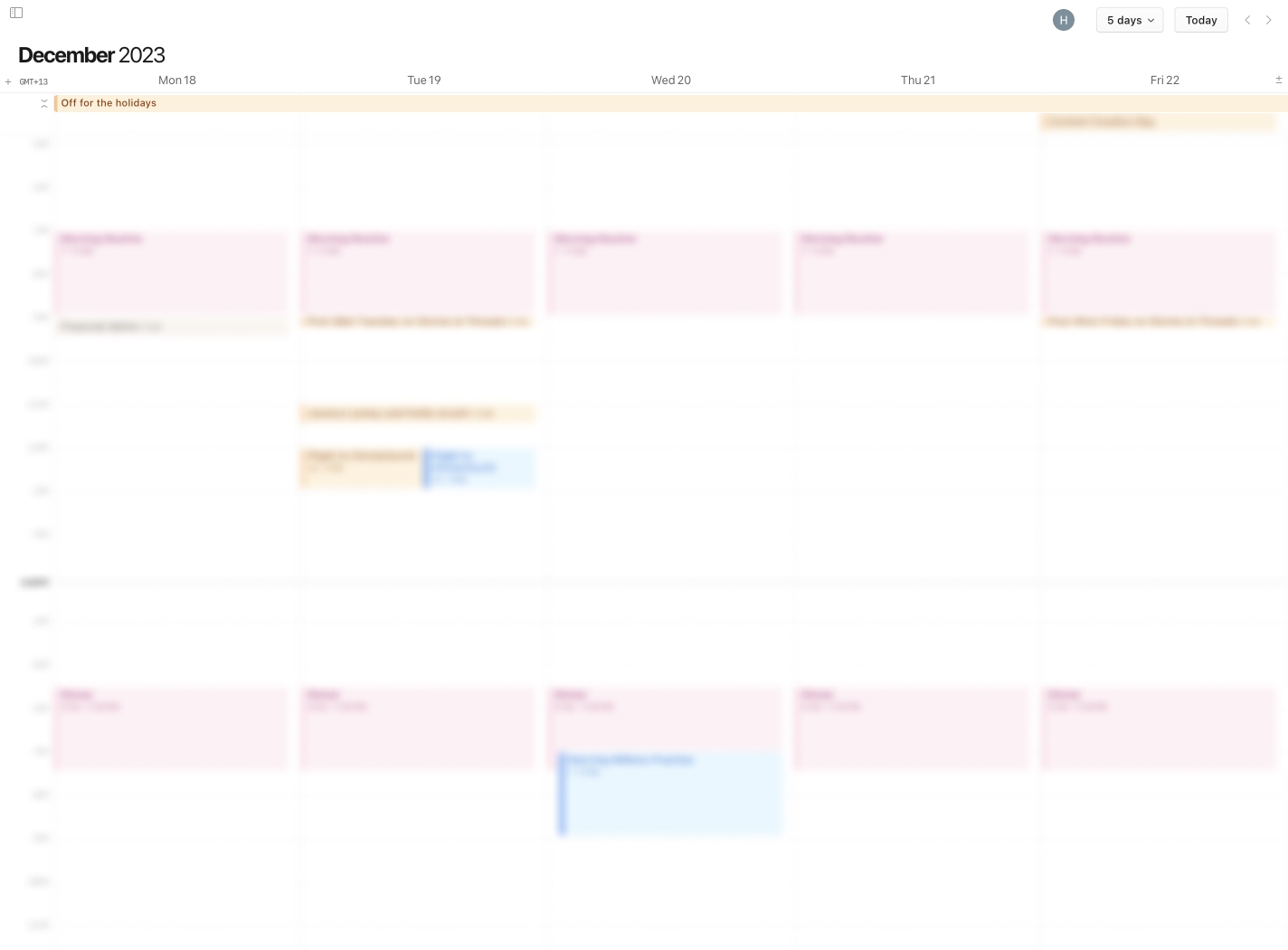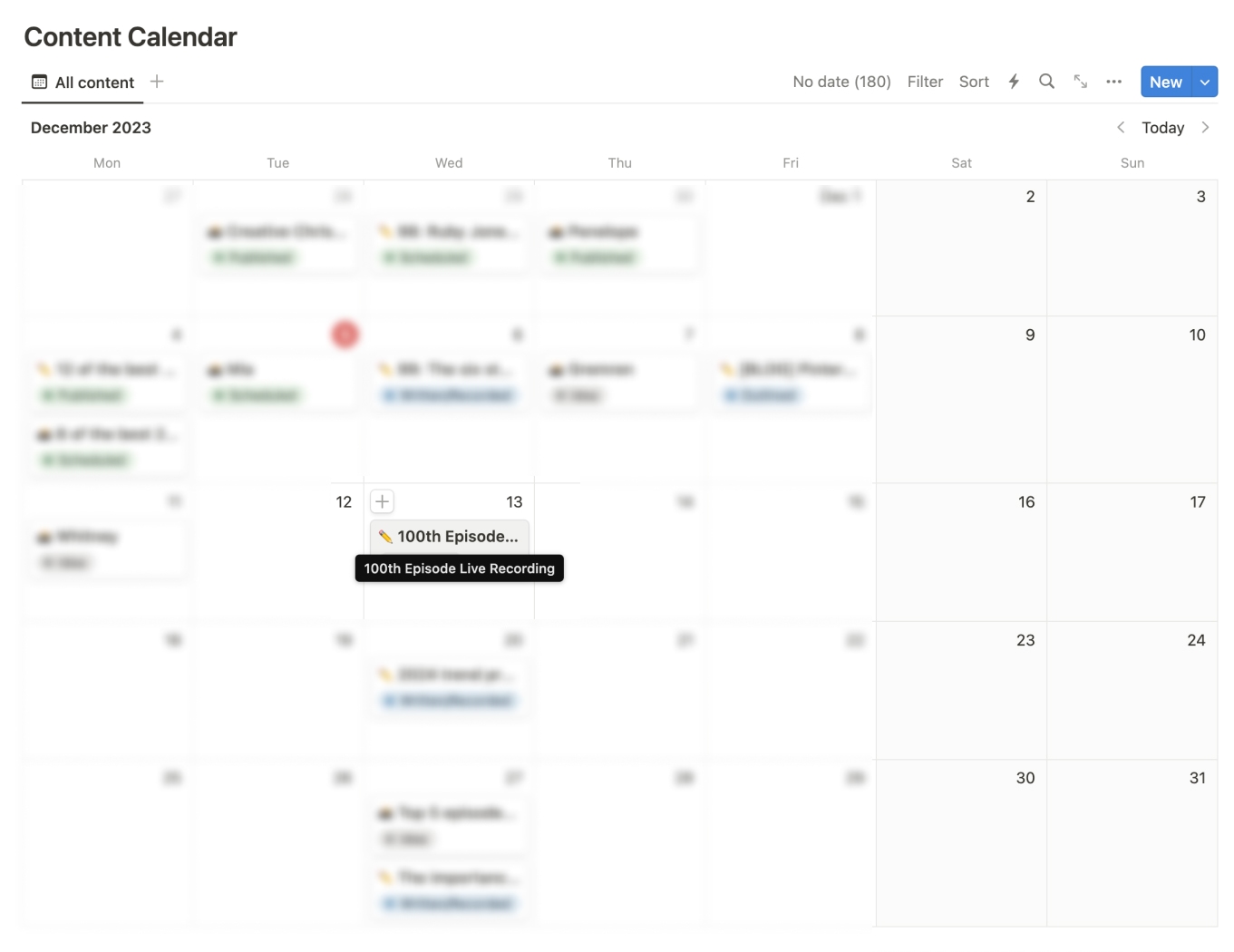The Ultimate Branding Checklist
Your go-to-branding guide is just a click away!
The six step system for planning your entire year as a creative business owner

As we come up to the end of the year and start thinking about next year, it can be overwhelming trying to think about what to focus on, what to do when, and how you’ll get it all done. But I’ve been using a simple system over the past six years of running my business that I wanted to share with you today to help you plan your entire year in about 30–60 minutes.
Step 1: Choose a theme or focus for the year
To give you a guide for everything you do in the next 12 months, I recommend choosing a theme for the year. This focuses you on what’s important, and gives you something to check all of your goals and decisions against to make sure they’re aligned with what you want to prioritise this year.
Take a look back at this year and think about what you would have appreciated more of, and then look ahead to next year and think about what you’d really love more of. Then try summarise that into one word or short phrase that can become your theme for the year ahead.
In the past, I’ve had themes like refine, simplicity, and be you, do you, have fun, for example.
Step 2: Block out time off
Now you’ve got your theme for the year, the first practical step is to proactively block out any time off that you want or need to take in your calendar. This will show you what time you have available and protect that time off from the beginning.
Whether you’re trying to prioritise rest, take time off with your family, treat yourself to a holiday, or just make sure you’re taking public holidays off and not forgetting they exist because you’re self-employed, this sets a firm boundary with yourself and any clients or customers that this time is protected and can’t be booked over.
Now you’ll also have a clear view of what time is left in your calendar for the next steps.

Step 3: Put in key dates
The next step is to put in any key dates that you already know about so that you don’t forget them, can plan for them well in advance, and can promote them as well as possible.
This could include events, markets, conventions, launches, collection drops, shop updates, collaborations, brand sponsorships, client projects, commission windows, and anything else in your business that you have dates for already.
In this example below, you can see my 100th podcast episode, which I knew would fall on a particular date and that I wanted to do something special for, so would need time to prepare and promote, which we’ll talk about in the next step.

Step 4: Map key promotional periods onto your content calendar
Now work backwards from each event or launch to figure out when you’ll need to promote it to your audience. This includes teasing it, announcing it, and being in full launch mode.
You might not need to do all of these for every event, and each phase will be different for each event too. For example, a collection drop might do the full shebang with teasing, announcing, and launching over a couple of months.
On the other hand, announcing that you’ll be tabling at a small local market might get two Instagram posts across the span of two weeks.
At this point, this doesn’t need to be exact, and doesn’t need to go into detail about what in particular you’ll be posting or where, but just needs to give an approximation about how long you’ll be in “promo mode” for each event or launch.
This is something you could do by highlighting on a calendar as I’ve shown in the example, or creating a digital task or event that covers those time periods.

Step 5: Decide what other goals you want to achieve in that year and when you’d like to achieve them
When you’ve done all of the previous tasks, you’ll be left with a calendar that shows you exactly what time you have left to take on other projects within your creative business.
Now of course, you can always take on other projects while you’re doing events and launching things, but the point is that now you can see that and make an informed decision about whether that’s actually doable or whether that’s going to lead to overwhelm and burnout because you’ll inevitably end up doing too many things at once! (Been there before? Yep, thought so!)
So, now you can decide what to do with the time you have left!
Use the theme you chose for the year to choose goals that will help you bring more of that theme into your business and life, and make sure that they fit in with everything else you have going on.
For example, if your theme is simplicity, one of your goals could be cutting down your product suite or automating some of your admin tasks, and you could do some two-week sprints in between events to make them happen (leaving room for you to take some time off as well of course!)
Step 6: Break projects down in your task management tool
Okay, with your goals decided and checked against your theme and calendar to make sure they’re aligned and achievable, we’re ready to make a plan for making them happen.
The last step is to break each goal down in your task management tool of choice into small, actionable tasks.
For example, if your goal is to cut down your product suite, what are the tasks you need to do to make that happen? They could be:
- Take inventory of the products I currently have
- Check analytics to see which products perform and sell the best
- Decide which products to keep and which to discontinue
- Run a sale on the last-chance items
- Remove discontinued items from my shop
- Relax and focus on the products I love
These tasks can now be put into your tasks management tool of choice, assigned to whoever needs to make them happen, given due dates, and put into action!

And that’s it! Now you have a plan for your entire year as a creative business. Things are bound to change and evolve, you’re likely to come up with new ideas, and the world is almost guaranteed to throw some curveballs your way, so don’t be surprised if this plan changes and flexes in some way, but now you have a roadmap to follow where you didn’t before. If that roadmap changes a little, that’s okay, at least you started driving with a clear direction!
Pin one of these graphics to save this post for later




December 6, 2023
Goals
more from














